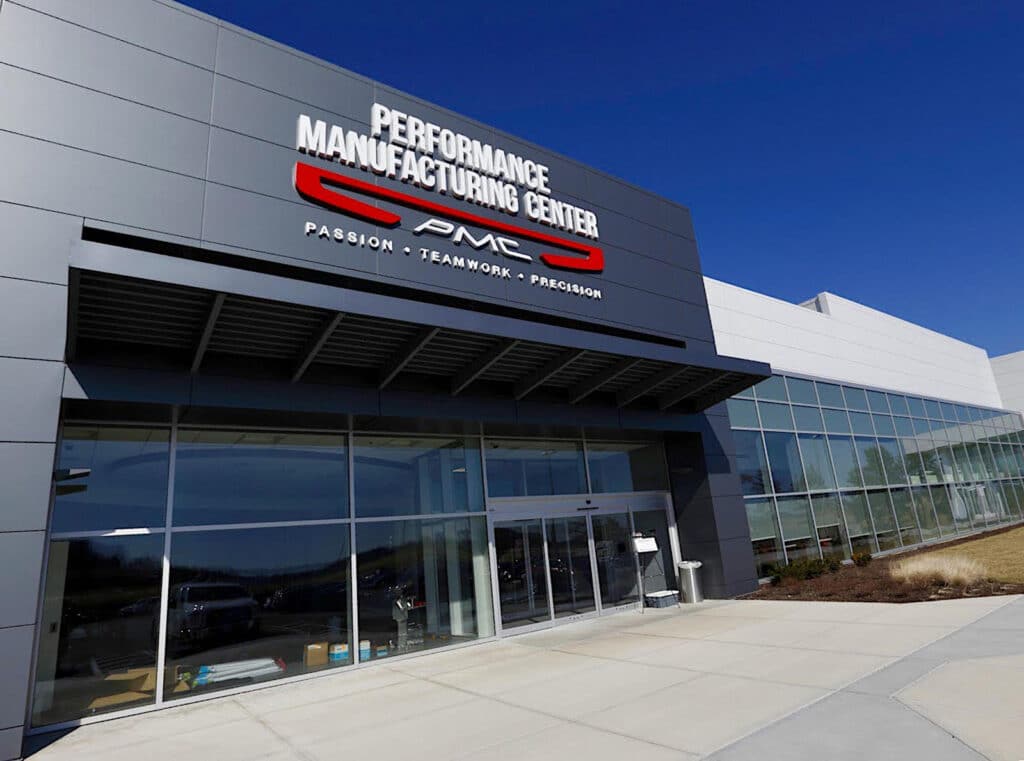Honda Leans into Fuel Cell and Safety Technology
Honda revealed plans to push forward on its propulsion and safety technology efforts in the U.S. and abroad, starting with the move to build hydrogen fuel-cell electric vehicles in Ohio.

The company will begin building the fuel-cell vehicle based off its popular CR-V crossover at its Performance Manufacturing Center, or PMC, in Marysville, Ohio starting in 2024. The new FCEV will contribute to Honda’s previously announced goal to make battery-electric vehicles and FCEVs represent 100% of its global auto sales by 2040, officials noted.
The new CR-V-based FCEV represents a unique merging of two technologies, a first in North America. It combines a plug-in feature with fuel-cell technology in one model, allowing the driver to charge the onboard battery to deliver EV driving around town with the flexibility of fast hydrogen refueling for longer trips.
“Honda established our goal to realize carbon neutrality by 2050 and the complete electrification of our vehicle line-up by 2040 is critical to achieving it,” said Gary Robinson, vice president of Auto Planning & Strategy for American Honda Motor Co. Inc.
“As we accelerate our plan to produce Honda battery EVs in the United States, we also will begin low volume production of fuel cell electric vehicles there to further explore their great potential as part of a sustainable transportation future.”
Leading the way
The move to produce the new CR-V-based fuel-cell vehicle at the PMC only highlights the company’s technical prowess. The center was originally designed to handle low-volume performance vehicle builds, such as the Acura NSX as well as many of Honda’s Performance Development race cars, preceding the new model.
Officials decided it made perfect sense to use that facility to build the new fuel-cell vehicle, mirroring a similar effort at its Tochigi, Japan plant played in manufacturing both the original NSX supercar starting in 1989 and, later, the Honda FCX Clarity FCEV in 2008.
“Our associates at the Performance Manufacturing Center have really enjoyed the opportunity to successfully introduce several specialty vehicles into the market,” said PMC plant leader Gail May. “This facility is perfect for production of a new Honda fuel cell electric vehicle, as our small-volume capability enables us to really leverage the skill and expertise of our team to produce quality zero-emission vehicles here in North America.”
Not just focused on clean, but safe too
The company bolstered its claim to being safety centric as well with the expanded capability of its Honda Sense 360 and Honda Sensing Elite Technologies, as well as their complimentary Acura offerings. The improved Honda Sensing 360 system will begin rolling out in the 2nd half of the decade and will be standard on all new Honda and Acura models in the U.S. by 2030.
The move to improve not only the capability of the safety technology but also the availability is critical to supporting Honda CEO Toshiro Mibe’s goal of getting to zero traffic collision fatalities, the company noted.
The improved systems began rolling out in China in 2024, starting with the next-generation Honda Sensing 360 that will better detect “abnormal conditions occurring to the driver and the vehicle’s surroundings.” The technology is design to reduce health- or human error-related collisions.
Meanwhile, the next variant of Honda Sensing Elite will “assist the driver on non-expressways including a hands-off function while driving through a traffic jam on arterial roads; to enable hands-off functions during merging onto and exiting from an expressway at a road junction; to assist the driver by automatically parking in and driving out of a home garage,” Honda said.
These technologies will be standard on all Honda and Acura vehicles in the U.S. beginning in 2030. The first-gen technology is already in use on nearly 7 million vehicles in the U.S.
Auto Lovers Land
Comments
Post a Comment